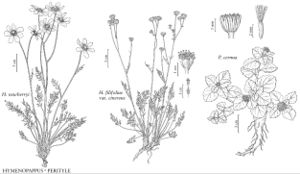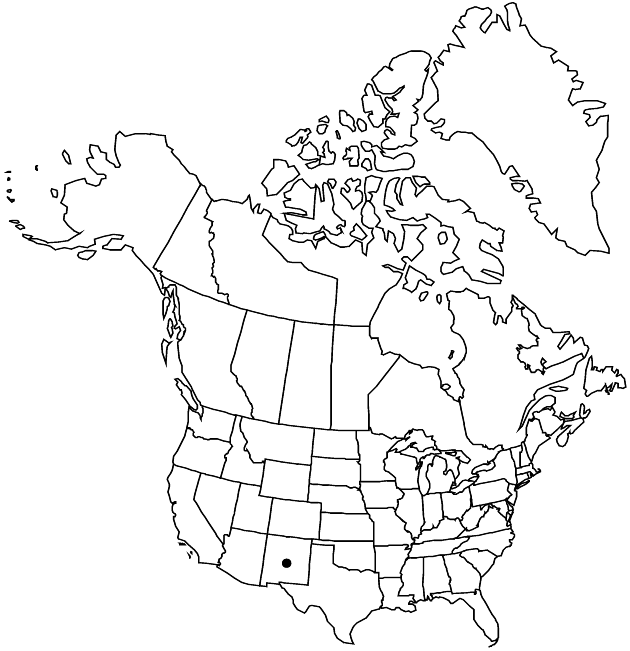Perityle cernua
SouthW. Naturalist 4: 204. 1959.
Common names: Organ Mountain rock daisy
Basionym: Laphamia cernua Greene Bull. Torrey Bot. Club 25: 122, plate 333, figs. 3, 4. 1898
Revision as of 20:40, 16 December 2019 by FNA>Volume Importer
Plants 3–12(–20) cm (closely appressed to rocks); glabrate or with transparent, multicellular hairs on petioles, peduncles, and phyllaries. Leaves: petioles 7–25 mm; blades ovate-reniform to ovate-cordate, 10–40 × 8–40 mm, margins unevenly serrate-dentate. Heads borne singly (nodding or erect), 10–12 × 12–14 mm. Peduncles 10–19 mm. Involucres broadly campanulate. Phyllaries 18–28, linear-lanceolate, 6–9 × 1.2–2 mm. Disc florets 20–150; corollas yellow, tubes 1.2–2 mm, throats narrowly funnelform, 2–3.3 mm, lobes 0.7–0.8 mm. Cypselae 2.1–3 mm; pappi of 25–35 bristles 0.5–1.5(–2) mm. 2n = 34 + 1 frag.
Phenology: Flowering spring–fall.
Habitat: Limestone or igneous cliffs and slopes
Elevation: 1600–3000 m
Discussion
Of conservation concern.
Perityle cernua is known only from the Organ Mountains of Doña Ana County.
Selected References
None.
Lower Taxa
None.

